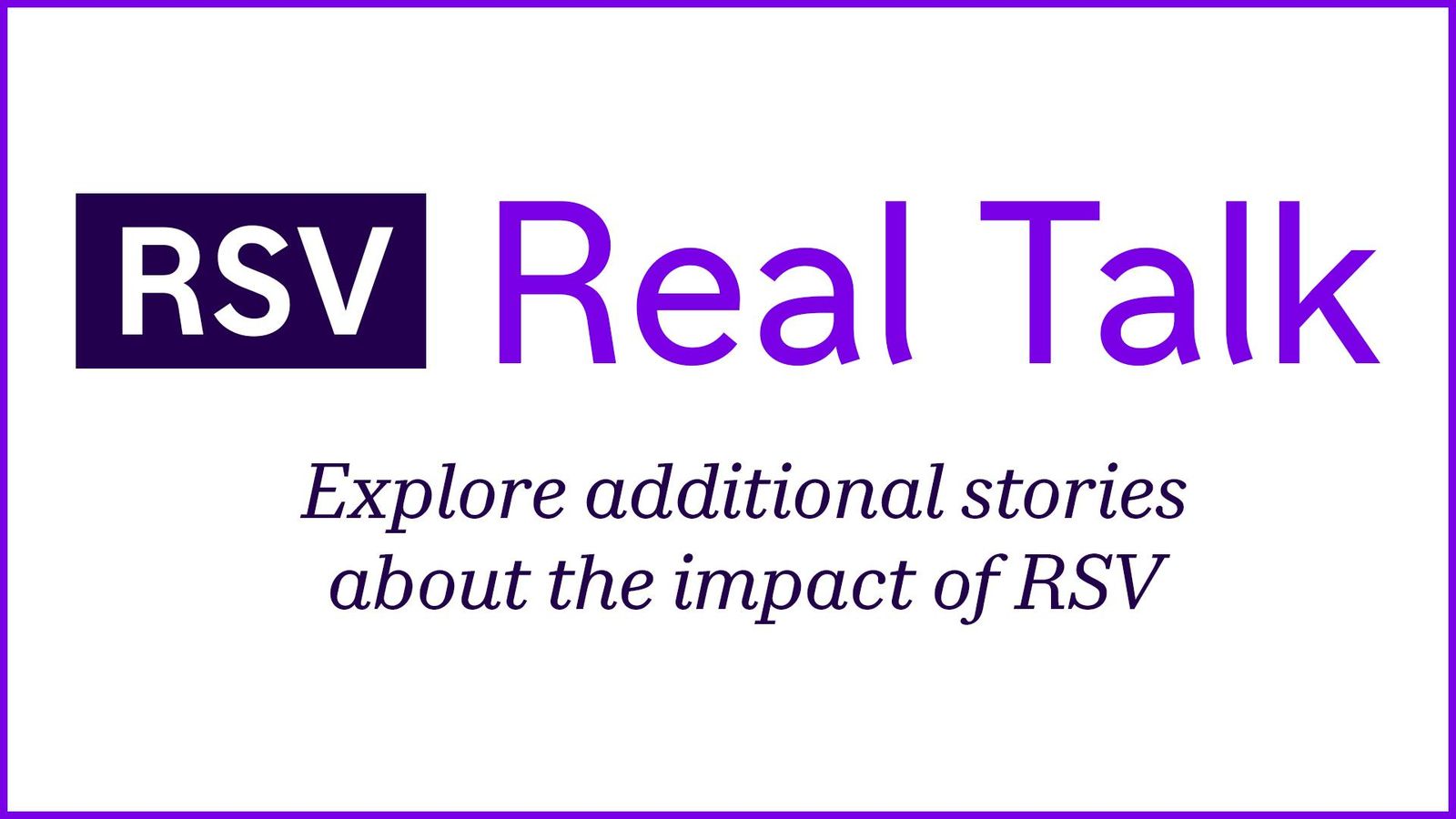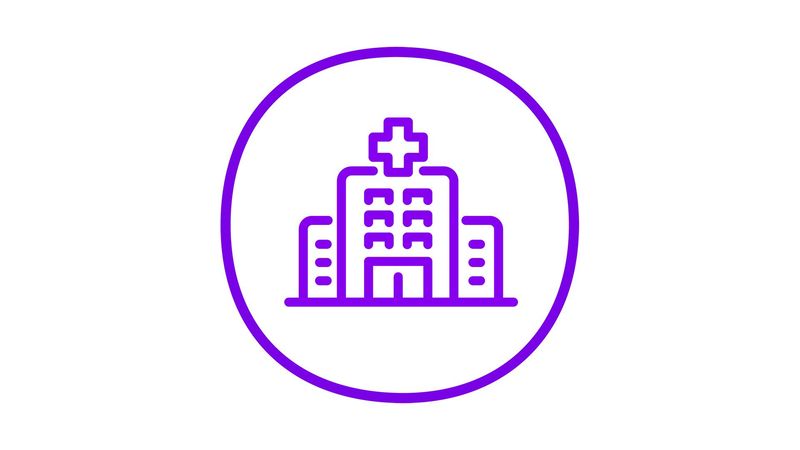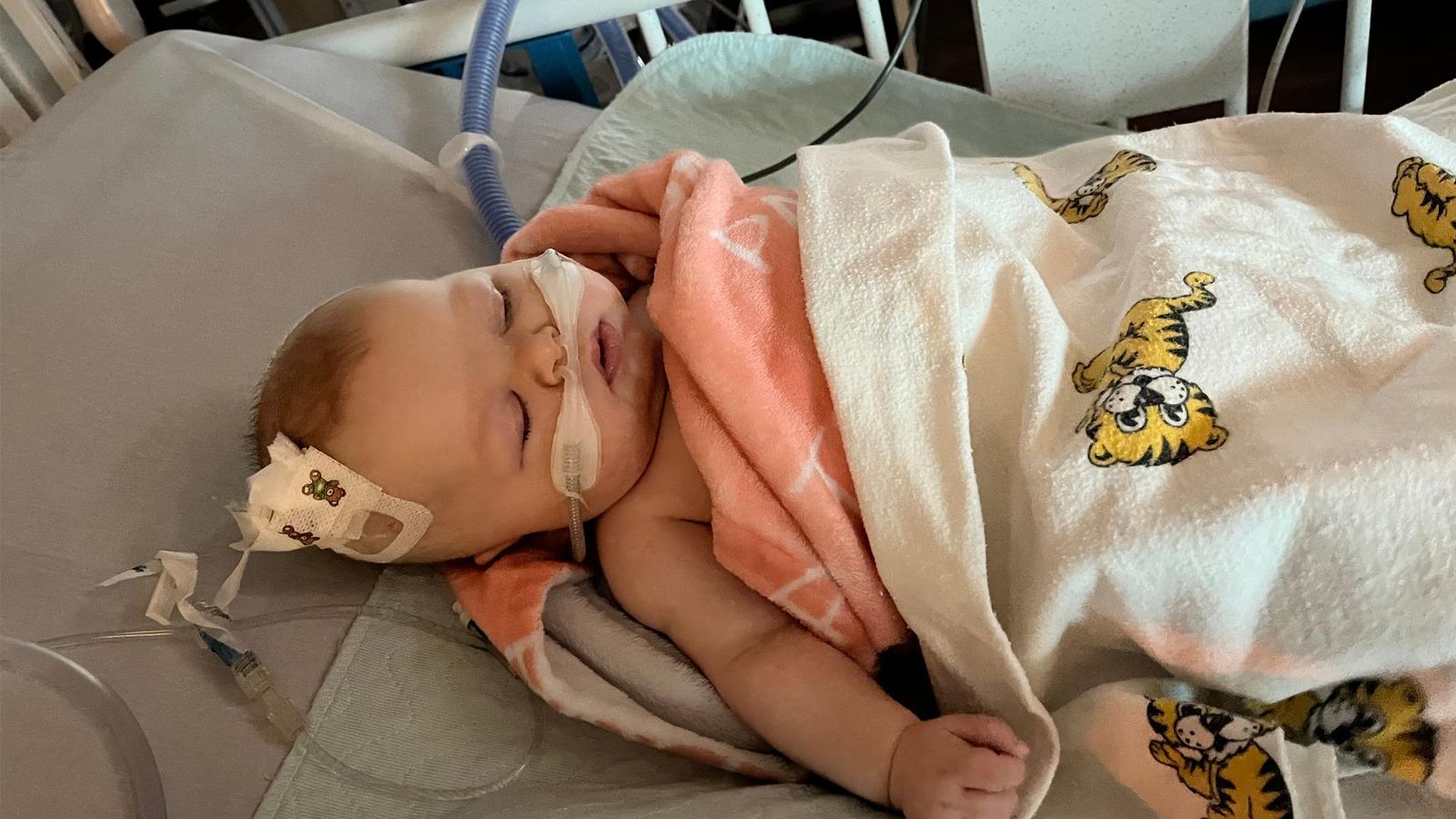
RSV Real Talk video playlist
Did You Know?
Bronchiolitis and pneumonia
These are severe lower respiratory tract infections that can be caused by RSV.1

RSV symptoms
RSV can go from cold-like symptoms to hospitalization in less than a week.2
16x more likely
Babies are 16x more likely to be hospitalized with serious RSV lung infection than the flu.3

When is RSV most common? Are all infants at risk from RSV?
This fact sheet will help you better understand RSV.

About RSV and its risks
RSV is a common, contagious seasonal virus that will infect nearly all children by their second birthday.2 While RSV symptoms are often similar to the common cold and hospitalization is rare, RSV is the most common cause of lower respiratory tract infections and a leading cause of hospitalization in babies, even healthy babies born at term.4
Emma's Story
At just 13-weeks-old, baby Peyton experienced severe lung infection caused by RSV. Her mom, Emma, recounts how Peyton's cold-like symptoms rapidly escalated to hospitalization in a matter of days. Emma is sharing her family’s story to emphasize the importance of prevention and to help make other parents aware of the key steps for helping to safeguard their little ones.
Explore More
RSV Real Talk: Joe’s Story
References
- Shi T, McAllister DA, O'Brien KL, et al; RSV Global Epidemiology Network. Global, regional, and national disease burden estimates of acute lower respiratory infections due to respiratory syncytial virus in young children in 2015: a systematic review and modelling study. Lancet. 2017; 390 (10098): 946-958
- Respiratory Syncytial Virus Infection (RSV): Infants and Young Children. Centers for Disease Control and Prevention. https://www.cdc.gov/rsv/high-risk/infants-young-children.html. Accessed March 2023.
- Zhou H, et al. Hospitalizations associated with influenza and respiratory syncytial virus in the United States, 1993-2008. Clin Infect Dis. 2012; 54 (10): 1427-1436
- Arriola CS, Kim L, Langley G, Anderson EJ, Openo K, Martin AM, et al. Estimated Burden of Community-Onset Respiratory Syncytial Virus-Associated Hospitalizations Among Children Aged <2 Years in the United States, 2014-15. Journal of the Pediatric Infectious Diseases Society. 2020; 9 (5): 587-95
MAT-US-2404798-v1.0-06/2024